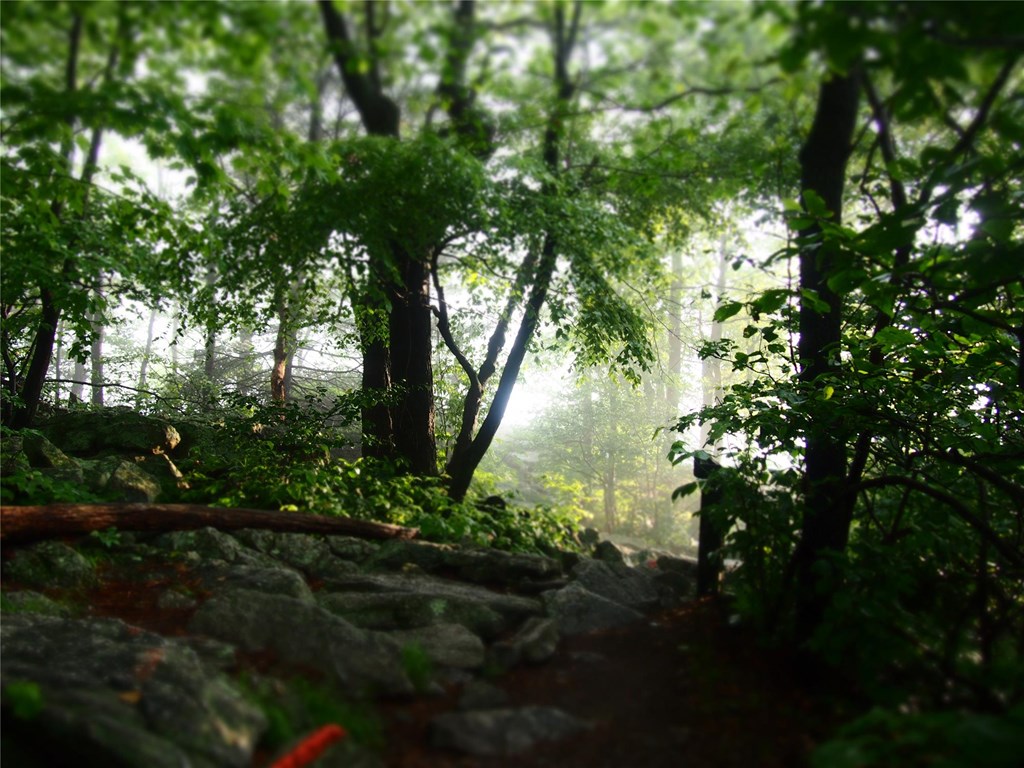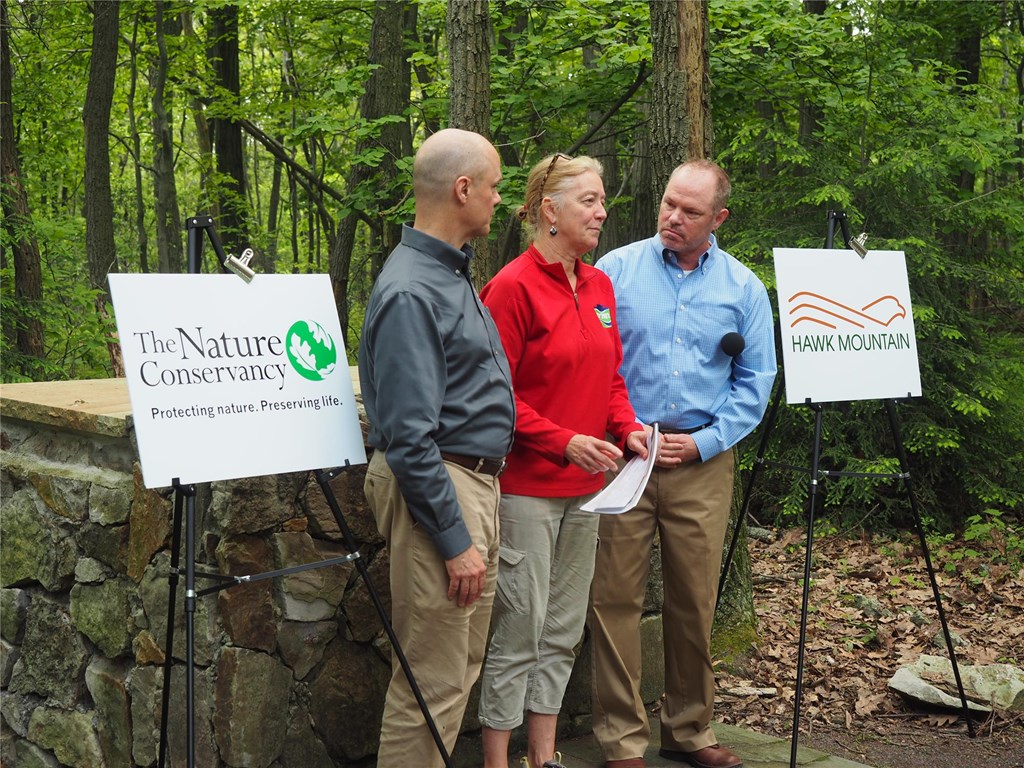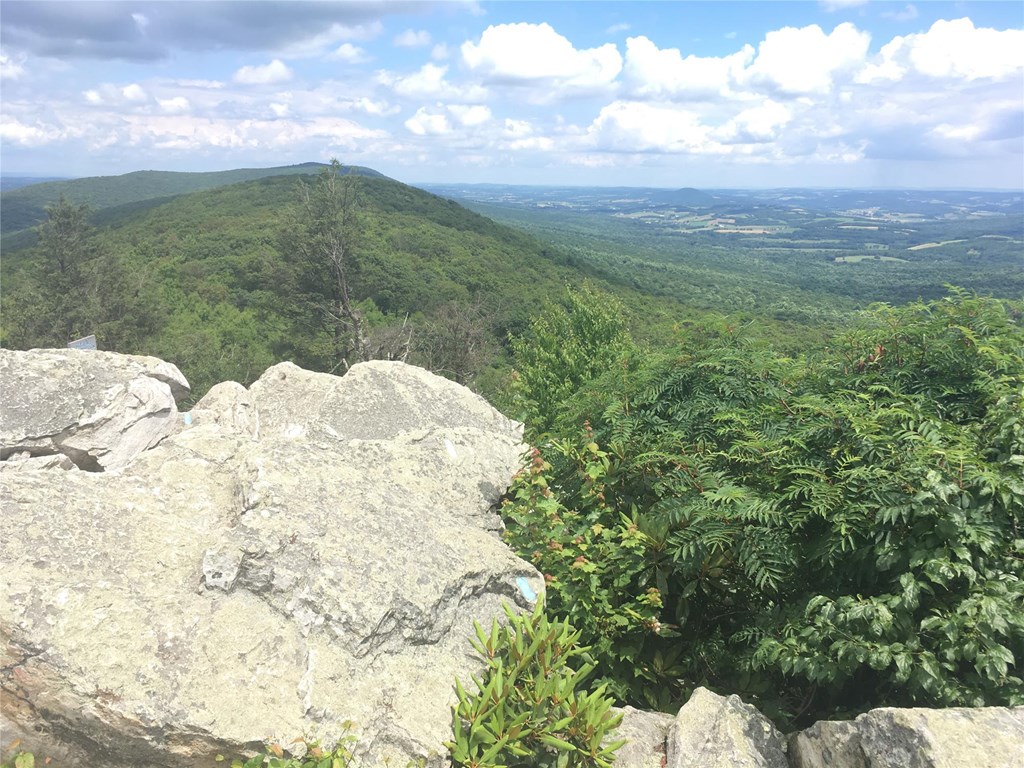Help the Climate and the Mountain
Posted on April 22, 2020 in Special Projects

By Rebekah Smith, Science-Education Outreach Coordinator
Several years ago, Hawk Mountain began a collaboration with The Nature Conservancy on a conservation easement and carbon offsetting initiative through their “Working Woodlands Program." Today, this partnership allows the Sanctuary to sell the additional carbon stored and sequestered in our forest each year through our collaborator Blue Source, Inc. Originally, the minimum purchase amount was too high for individuals, and corporations were the primary purchasers. Now, through a company called Cool Effect, a non-profit crowdfunding platform that provides individuals with the opportunity to support carbon emissions reductions, individuals can retire carbon credits in amounts as small as a single unit through purchase on the Cool Effect website. In other words, you can retire a carbon credit and support forest conservation on the Mountain.
Carbon dioxide is the most commonly produced greenhouse gas, making it a substantial contributor to global climate change. According to the US Energy Information Administration, an estimated 5.1 billion metric tons of energy-related carbon dioxide was emitted by the United States. Carbon primarily enters the atmosphere through the consumption of natural resources such as coal, oil, or natural gas and is also released as a waste product through the exhalation of animals. Carbon sequestration is the process of capturing and storing atmospheric carbon dioxide to reduce the amount of carbon dioxide in the atmosphere, ultimately resulting in the mitigation of global climate change.
Hawk Mountain Sanctuary participates in biologic carbon sequestration, meaning that the atmospheric carbon that has been removed and stored in our forests and the carbon that continues to be removed annually has value. The Nature Conservancy reports that one acre of mature forest can absorb one ton of carbon each year. The exact value of Hawk Mountain forest carbon was estimated by The Nature Conservancy foresters, measured through a series of permanent tree plots, and verified by a third-party forest carbon auditing firm to the American Forest Carbon Improved Forest Management Standard.

As part of this program, Hawk Mountain placed its forest into a conservation easement with The Nature Conservancy and committed stewardship activities to promote healthy forest regeneration, including management of invasive non-native plants. A forest management plan was created with staff and The Nature Conservancy foresters and approved by the Forest Stewardship Council certification standard. Todd Bauman, Director of Stewardship, and his stewardship team are using income from carbon sales to hire seasonal crews that can help guide the staff to improve forest health and address invasive plants.
Hawk Mountain’s carbon credits have been marketed in past two years to several for-profit businesses eager to reduce their carbon footprint. The average American emits 16.6 metric tons of carbon dioxide per year, while a large corporation emits tens of millions of tons of carbon dioxide annually. The corporations that purchase our carbon credits are also working to reduce and replace to no or low carbon alternatives, reducing their footprints before purchasing our carbon credits. It is common for large corporations to purchase carbon offsets; however, Cool Effects has also made it possible for individuals to buy them for themselves or for others. Daily activities such as heating our homes with fossil fuels, driving our cars or taking a flight to visit family contribute to our carbon footprints.
Prior to Rosalie Edge’s 1934 purchase of the 1400-acre land parcel that constitutes the core of Hawk Mountain Sanctuary, most of Hawk Mountain’s forest was logged or burned for charcoal making and blueberry growing. During the late 1800s and early 1900s, white pine and other large trees were selectively harvested for timbers that could be used for building mines. Since 1934, the forest has been allowed to regenerate with minimal human impact. In fact, much of the forest surrounding Hawk Mountain lands has continued to be heavily harvested for its valuable commercial timber resource, while Hawk Mountain land remains predominately older forest due to the early and ongoing conservation efforts of its staff and board.

Hawk Mountain Sanctuary’s founders intended to set aside land to protect migrating raptors, and we pass on the ecologically conscious values of our founders by keeping the Mountain as natural as possible with little human impact. This management technique supports the survival of migratory raptors and provides healthy habitats for a broad suite of Appalachian forest wildlife. Maurice Broun wrote in Hawks Aloft, “Sanctuary, we mean it!” and today, we still take the meaning of the word ‘Sanctuary’ quite seriously.
While many of us are stuck inside for Earth Day 2020, know that you can offset your own carbon dioxide emissions and support forest health of the Sanctuary by purchasing Hawk Mountain carbon credits through Cool Effects. Whether it’s for yourself or a gift for others, you can celebrate Earth Day from home by conserving Pennsylvania’s forests through Hawk Mountain Sanctuary’s carbon offset initiative.
Anyone can buy a Hawk Mountain carbon credit at cooleffect.org/content/project/hawk-mountain
You can calculate your own or your household’s carbon footprint here:
nature.org/en-us/get-involved/how-to-help/carbon-footprint-calculator/
Additional Information
hawkmountain.org/conservation-science/active-research/land-conservation
nature.org/en-us/about-us/where-we-work/united-states/working-woodlands
bluesource.com
usgs.gov/faq/energy
cooleffect.org